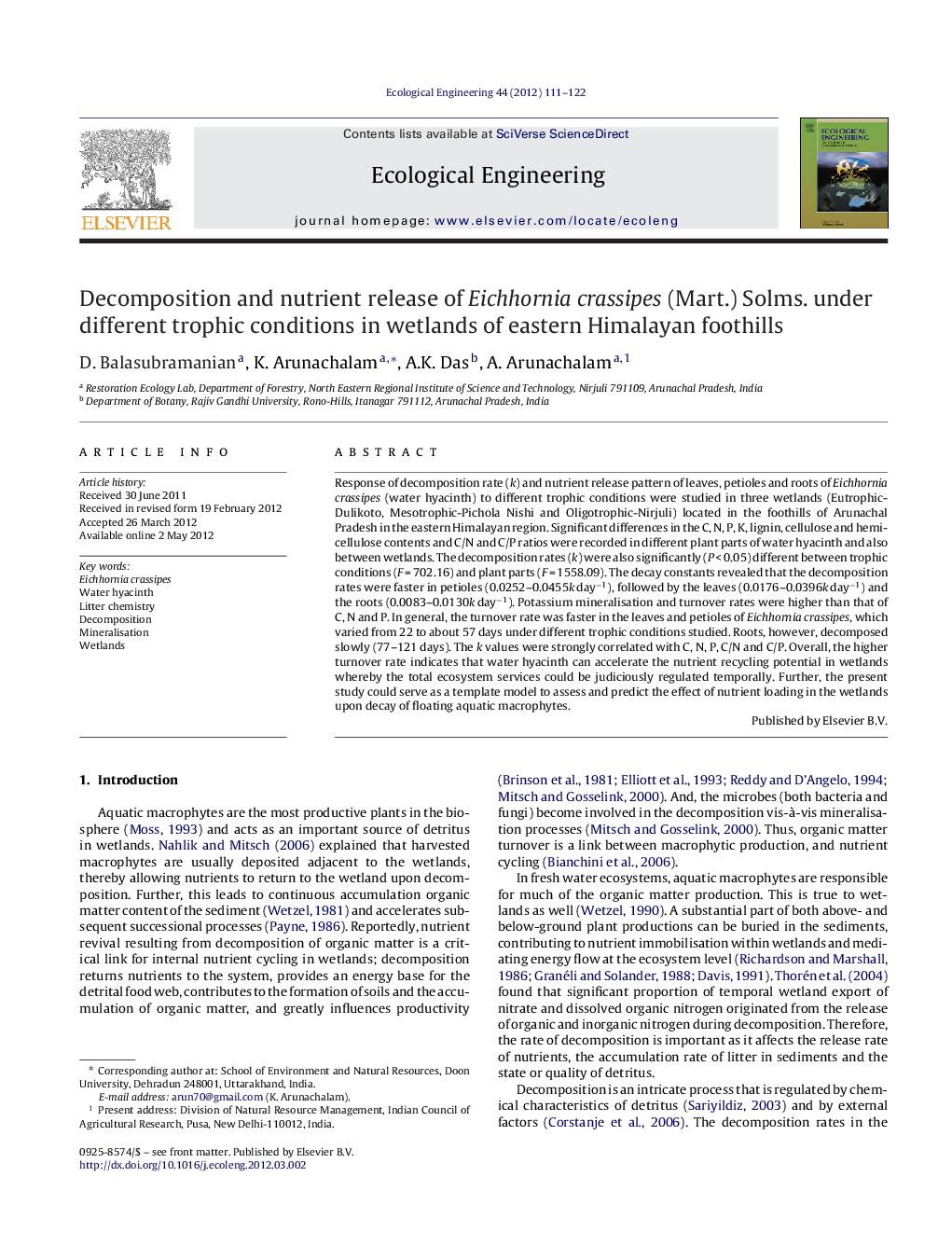| Article ID | Journal | Published Year | Pages | File Type |
|---|---|---|---|---|
| 6302672 | Ecological Engineering | 2012 | 12 Pages |
Abstract
Response of decomposition rate (k) and nutrient release pattern of leaves, petioles and roots of Eichhornia crassipes (water hyacinth) to different trophic conditions were studied in three wetlands (Eutrophic-Dulikoto, Mesotrophic-Pichola Nishi and Oligotrophic-Nirjuli) located in the foothills of Arunachal Pradesh in the eastern Himalayan region. Significant differences in the C, N, P, K, lignin, cellulose and hemicellulose contents and C/N and C/P ratios were recorded in different plant parts of water hyacinth and also between wetlands. The decomposition rates (k) were also significantly (P < 0.05) different between trophic conditions (F = 702.16) and plant parts (F = 1558.09). The decay constants revealed that the decomposition rates were faster in petioles (0.0252-0.0455k dayâ1), followed by the leaves (0.0176-0.0396k dayâ1) and the roots (0.0083-0.0130k dayâ1). Potassium mineralisation and turnover rates were higher than that of C, N and P. In general, the turnover rate was faster in the leaves and petioles of Eichhornia crassipes, which varied from 22 to about 57 days under different trophic conditions studied. Roots, however, decomposed slowly (77-121 days). The k values were strongly correlated with C, N, P, C/N and C/P. Overall, the higher turnover rate indicates that water hyacinth can accelerate the nutrient recycling potential in wetlands whereby the total ecosystem services could be judiciously regulated temporally. Further, the present study could serve as a template model to assess and predict the effect of nutrient loading in the wetlands upon decay of floating aquatic macrophytes.
Related Topics
Life Sciences
Agricultural and Biological Sciences
Ecology, Evolution, Behavior and Systematics
Authors
D. Balasubramanian, K. Arunachalam, A.K. Das, A. Arunachalam,
